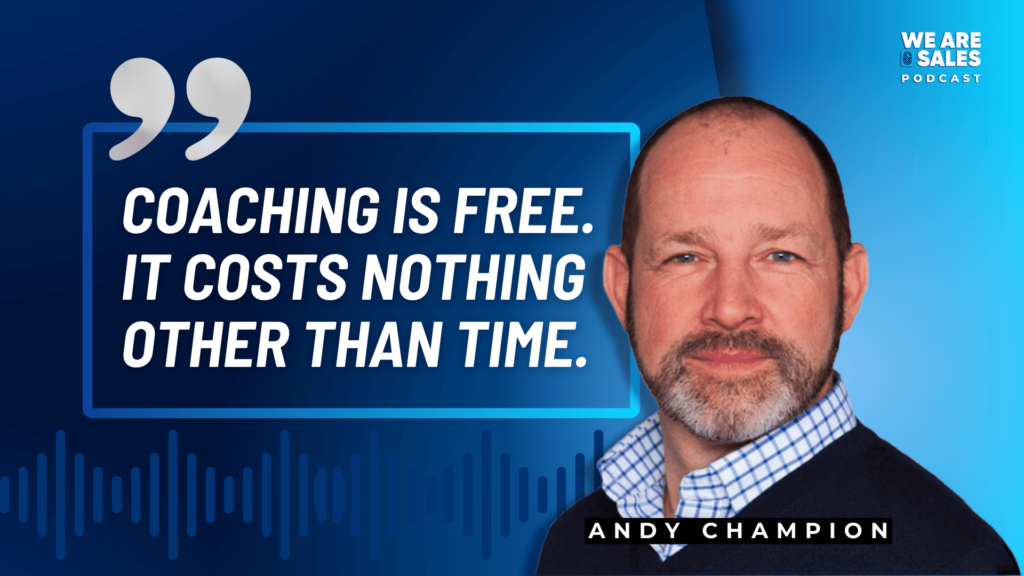Share:
These 3 tactical coaching tips will unlock your team’s full potential

Ever wondered what it takes to be a phenomenal coach?
With Andy Champion, VP & GM International at Highspot, we dove deep into this topic. Andy offered a rich perspective on how to elevate teams to their peak performance.
“My job is to make everybody in my organization that reports into me directly and indirectly better at their jobs than if I was here” – Andy Champion
You can listen to the episode here, or read along to get our favourite tips on how to be a more effective coach.
Want more articles like this one directly in your mailbox?
Even though most of us agree on the impact of coaching, it is not always clear how to approach it in reality.
Let’s change this.
In what comes next, I’ll share 3 tactical tips I’ve gathered from Andy that everybody can implement as of tomorrow.
1. Setting time
One of the main reasons some of you are not coaching your reps is probably “because you don’t have time”. Rather, you don’t make the time.
Andy is very intentional about making it a top priority:
“This year, I set a goal to dedicate 20% of my time to coaching my team. Currently, I’m at 16-18%.”
The key is to establish some kind of rhythm to it.
“I believe it’s crucial to create a consistent coaching schedule with my team. For all my direct reports, I allocate weekly time slots of 25 to 45 minutes for one-on-one discussions. This can vary depending on our history of working together or their current workload. Additionally, I incorporate a quarterly review session into this routine, which has proven effective for me.”
Find something that works for you.
2. The GROW model
If you’re thinking about repeatability, your mind might be thinking about frameworks. Andy would approve of that thinking, as he’s himself a huge advocate of the GROW model.
Andy leverages this framework for structured coaching conversations, focusing on growth and actionable outcomes.
GROW is an acronym and stands for:
- G (Goals): Identify the objective or goal. What is the person trying to achieve?
- R (Reality): Consider the current situation and constraints, such as resources and time.
- O (Options): Explore different strategies and paths through facilitated discussion.
- W (Will): Decide on actions, accountability, and the support needed to achieve the goals.
This model simplifies coaching into manageable steps for anyone to follow.
3. Using “And” Instead of “But”
Andy advises on the subtle but powerful shift from saying “but” to “and” when building on someone’s idea or providing feedback.
Andy explains this:
“How frequently do we encounter someone presenting an idea that we might not immediately grasp or value, and our response is to quickly point out issues, saying, ‘Well, but what about this issue?’ or ‘But have you considered that problem?’ This approach quickly focuses on negatives that may detract from the idea.”
“Contrast this with a more constructive approach, where we might say, ‘Dylan, that’s a fascinating idea. And, have you considered this particular challenge?’ This way, the conversation remains the same in essence, but you frame it in a fundamentally different manner.”
Are you ready to transform your coaching approach and unlock your team’s full potential?

